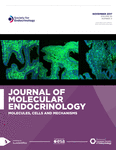Oxidative and endoplasmic reticulum stress in β-cell dysfunction in diabetes
- 1Immunity, Infection and Inflammation Program, Mater Research Institute, Translational Research Institute, University of Queensland,
37 Kent Street, Woolloongabba, Brisbane, Queensland 4102, Australia
2Metabolic Diseases Program, Mater Research Institute, The University of Queensland, Translational Research Institute, 37 Kent Street, Woolloongabba, Brisbane, Queensland 4102, Australia
- Correspondence should be addressed to M A McGuckin; Email: michael.mcguckin{at}mater.uq.edu.au
Abstract
The inability of pancreatic β-cells to make sufficient insulin to control blood sugar is a central feature of the aetiology of most forms of diabetes. In this review we focus on the deleterious effects of oxidative stress and endoplasmic reticulum (ER) stress on β-cell insulin biosynthesis and secretion and on inflammatory signalling and apoptosis with a particular emphasis on type 2 diabetes (T2D). We argue that oxidative stress and ER stress are closely entwined phenomena fundamentally involved in β-cell dysfunction by direct effects on insulin biosynthesis and due to consequences of the ER stress-induced unfolded protein response. We summarise evidence that, although these phenomenon can be driven by intrinsic β-cell defects in rare forms of diabetes, in T2D β-cell stress is driven by a range of local environmental factors including increased drivers of insulin biosynthesis, glucolipotoxicity and inflammatory cytokines. We describe our recent findings that a range of inflammatory cytokines contribute to β-cell stress in diabetes and our discovery that interleukin 22 protects β-cells from oxidative stress regardless of the environmental triggers and can correct much of diabetes pathophysiology in animal models. Finally we summarise evidence that β-cell dysfunction is reversible in T2D and discuss therapeutic opportunities for relieving oxidative and ER stress and restoring glycaemic control.
- diabetes (all)
- insulin synthesis
- insulin secretion
- islet cells
- pancreatic β-cell
- endoplasmic reticulum stress
- Revision received 12 November 2015
- Accepted 17 November 2015
- Made available online as an Accepted Preprint 17 November 2015
- © 2016 Society for Endocrinology











